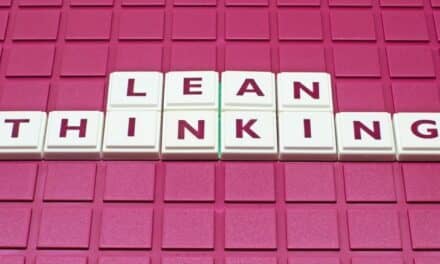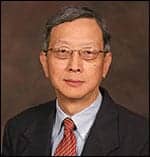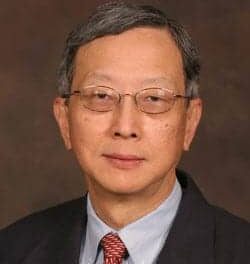By Binseng Wang, ScD, CCE
As everyone knows, we are starting to face a serious labor shortage in CE/HTM due to the accelerating retirement of current professionals and insufficient replacement by younger generations. A fundamental root cause of this shortage is the lack of recognition of the profession, which despite several decades of existence is still not licensed, unlike most other healthcare professions.
Why would a talented young person go into CE/HTM instead of a licensed profession like physical therapy or respiratory therapy and risk losing his/her job to less qualified people? Some employers—notably manufacturers—would ask, ‘Why pay more for an educated, but unlicensed person if they only need someone who can swap printed circuit boards?’ Institutions of higher education are hesitant to invest in programs that do not have a clear demand for their graduates as well. While useful, certifications are not adequate replacements for licensing, because it is a voluntary process.
One of the main objections against licensing voiced by many current practitioners is the likelihood of excessive emphasis on formal education instead of knowledge and experience. Many of them were trained in military schools or by manufacturers and, thus, may not have engineering or even any formal degree. Others may have earned an associate degree, but not a bachelor’s or higher degree. If licensing were solely or mostly based on formal education, it would definitely hurt many of them. Since this is a new profession that is still in the process of being established, we need to have a “transition period,” in which people with diverse educational backgrounds and work experiences can be licensed. The same transition should also be adopted for membership admission in professional societies and for certification programs.
Paths Less Chosen
History has proven that many scientific discoveries and technological innovations are actually originated by persons with limited formal education. Below, are a few examples that come to mind after the creation of the first schools of higher education around the turn of the first millennium:
• Leonardo da Vinci (1452-1466): Widely recognized as the quintessential Renaissance man, Leonardo was an illegitimate son and, thus, at that time, was unable to attend good schools and had to learn Latin and mathematics later in life, mostly on his own. Although his father was able to arrange for him an apprenticeship in a famous artist’s workshop, he could not use his father’s family name; instead, he had to use his birthplace—Vinci—as his last name. In addition to several painting masterpieces, he made extraordinary contributions to science and engineering (Encyclopedia Britannica).
• Michael Faraday (1791-1867): Credited as one of the fathers of electromagnetism and the discoverer of electromagnetic induction, diamagnetism, and electrolysis, Faraday was born in a poor, lower-class English family and, thus, only had basic school education. While a bookbinder apprentice, he read many books and became fascinated with chemistry and electricity. After attending some lectures at the Royal Institution, he managed to gain a position there as a laboratory assistant. From this humble beginning, Faraday managed to make several important discoveries (including the famous Faraday cage) and eventually became a professor of chemistry (Royal Institution).
• Charles Darwin (1809-1882): Heralded as the father of the theory of evolution by natural selection, young Darwin did not have a clear career direction. He attended but dropped out of medical school, and also went to a divinity school following his father’s wishes. Soon after earning a degree in theology, he boarded HMS Beagle as a self-financed “gentleman companion to the captain” seeking adventure. Having inherited wealth from his parents and concerned about possible negative reactions, Darwin sat on his theory for two decades before finally publishing it (Encyclopedia Britannica).
• Alexander Bell (1847-1922): Acknowledged by the US Patent Office as the inventor of the telephone, Bell was admitted but unable to attend college because his family moved from the UK to Canada. He became a teacher for deaf and mutes after learning elocution from his father. He invented the telephone mostly based on his own studies and experiments (Encyclopedia Britannica).
• Thomas Edison (1847-1931): Arguably the greatest inventor of all times (with >1000 patents), Edison was a poor student and had to be homeschooled by her mother, thus never earned any formal degree. He worked as a telegrapher and briefly in the maintenance of printing machines before venturing into inventing and building electrical devices (Library of Congress).
• Albert Einstein (1879-1955): Perhaps the most popularly celebrated scientist of the last one hundred years, Einstein was trained as a teacher in physics and mathematics but was unable to find any academic position after graduation because of his rebellious reputation at college. Instead, he had to accept employment as a clerk at the Swiss Patent Office. While there, he produced some of his most important contributions to modern physics (Nobel).
• Godfrey Hounsfield (1919-2004): The only engineer ever awarded with a Nobel Prize in Physiology or Medicine (shared with the physicist Allan Cormack) for the development of the CT scanner, Hounsfield only earned a diploma from the Faraday House Engineering College (somewhat equivalent to the ASc degree in Electrical Technology in the US) before working for EMI (famous worldwide for producing the Beatles records) where he invented and lead the production of the first CT scanners (Nobel).
• Youyou Tu (1930-): Credited for saving and improving the lives of millions of people from malaria due to her discovery of artemisinin, Tu only had a bachelor’s degree in pharmacy from a traditional Chinese medicine university, and was practically unknown even in her native country, until she was awarded a Nobel Prize in Physiology or Medicine in 2015 (Nobel).
• Jane Goodall (1934-): Famous primatologist and animal rights activist, Goodall only had a high-school certificate and worked as a secretary before conducting groundbreaking work on primate social behavior in Africa. She had to ask for special permission to enter graduate school and receive a doctoral degree based on those studies because she never earned an undergraduate degree (Encyclopedia Britannica).
• Steve Jobs (1955-2011): Legendary founder of Apple and creator of iPhone, Jobs was born out of wedlock from a Syrian graduate student and an American mother, who gave him up for adoption due to strong family objections. Although Jobs was admitted to college, he dropped out after only 6 months and only auditioned a few courses of his interest afterward. While not an engineering wizard, he had an uncanny ability to anticipate consumers’ desires without them even realizing it (Wikipedia). His co-founder and engineering wizard, Steve Wozniak, also never finished college.
• Maya Lin (1959-): Recipient of the 2009 National Medal of Arts and 2016 Presidential Medal of Freedom, Lin was an undergraduate student when she entered and won the national competition for the Vietnam Memorial. Initially, she endured a lot of criticisms for her unconventional design, but the Memorial became very popular and widely admired, receiving the 25-Year Award of the American Institute of Architects (Encyclopedia Britannica).
Do Not Discriminate
Some readers may retort that all the examples above are clearly outliers that should not be used as paragons for the “normal” population. Indeed, these persons may be 7 sigmas (i.e.,19 in a billion) or even 8 sigmas (i.e., 0.04 in a billion) beyond the average, in terms of intellect or tenacity. However, if you look around yourself carefully, I bet you will find other impressively accomplished people with little if any, formal education. These folks are rarely celebrated by the media and the public because we all tend to focus only on the extremes while ignoring those who made significant but less spectacular contributions to the society—a phenomenon psychologists call Availability Error or Bias. By the way, many of the best scientists were also not the best students while in school. Also, I intentionally excluded from the list above people with little, if any, education who made remarkable contributions to arts, law, politics, or business, as some readers may say that education is not a prerequisite for those careers.
If you still think the examples above are too far removed from CE/HTM, let me give you one that is in our profession. Joel J. Nobel (1934-2014) earned an undergraduate degree in English before receiving a master’s in international relations and, finally, a medical degree. While a surgical resident, he designed and developed a mobile emergency life support and resuscitation system, called MAX, which is the precursor of the modern crash cart used throughout the world, saving countless lives.
After serving as a physician on board of a submarine during the Vietnam War, Nobel worked as an emergency room doctor. There, he discovered that nine out of 18 models of resuscitators were ineffective. This discovery motivated him to establish in 1968 a non-profit organization dedicated to the testing and evaluation of medical devices, initially called the Emergency Care Research Institute, now known as ECRI Institute. Considering these extraordinary contributions, Nobel was inducted into the CE Hall of Fame by the American College of Clinical Engineering (ACCE). So, if there were a licensing process when he was still alive, wouldn’t he deserve to be licensed as a CE/HTM professional, even though he never acquired an engineering degree?
Incidentally, for readers who are wondering which of the two traditional theories of intelligence—nature or nurture—would be the best one to explain the geniuses mentioned above, I am sorry to say that neither one is likely to win the battle. None of them had extraordinarily bright parents or attended elite educational institutions. This is not totally surprising, as evidence shows genes can only contribute as much as 50% to 60% of an individual’s intelligence and success depends on more than just intelligence.
Mind you, I am not arguing against requiring proofs of competency through diplomas, much less trying to discourage young persons from pursuing higher education and earn good grades. Statistics have shown that, on average, people with more education tend to (but not always) succeed more in life—and also earn more money. But until we have several well-established higher education programs in CE/HTM and a solid contingent of professionals with formal education, we should not discriminate against those who came into this profession with different educational backgrounds—as well as other diversities—if they can prove their competency through work records and, if needed, unbiased evaluations.
Binseng Wang is the principal consultant with BSI, a health technology consulting firm, and a 24×7 editorial board member. Contact [email protected].
References
1. Wang B. Are you licensed? 24×7 magazine. June 2003. Available at: https://24x7mag.com/2007/01/article-18300/. Accessed July 1, 2018.
2. Wang B. How can we attain licensure? 24×7 magazine. July 2003. Available at: https://24x7mag.com/2007/01/article-18313/. Accessed July 1, 2018.
3. Encyclopedia Britannica. Leonardo da Vinci. Available at https://www.britannica.com/biography/Leonardo-da-Vinci. Accessed July 1, 2018.
4. The Royal Institution. Michael Faraday (1791-1867). Available at http://www.rigb.org/our-history/people/f/michael-faraday. Accessed July 1, 2018.
5. Encyclopedia Britannica. Charles Darwin. Available at https://www.britannica.com/biography/Charles-Darwin. Accessed July 1, 2018.
6.Encyclopedia Britannica. Alexander Graham Bell. Available at https://www.britannica.com/biography/Alexander-Graham-Bell. Accessed July 1, 2018.
7. Library of Congress. Life of Thomas Alva Edison. Available at https://www.loc.gov/collections/edison-company-motion-pictures-and-sound-recordings/articles-and-essays/biography/life-of-thomas-alva-edison/. Accessed July 1, 2018.
8. Nobel Media. Albert Einstein – Biographical. Available at https://www.nobelprize.org/nobel_prizes/physics/laureates/1921/einstein-bio.html. Accessed July 1, 2018.
9. Nobel Media. Godfrey N. Hounsfield – Biographical. Available at https://www.nobelprize.org/nobel_prizes/medicine/laureates/1979/hounsfield-bio.html. Accessed July 1, 2018.
10. Nobel Media. Youyou Tu – Biographical. Available at https://www.nobelprize.org/nobel_prizes/medicine/laureates/2015/tu-bio.html. Accessed July 1, 2018.
11. Encyclopedia Britannica. Jane Goodall. Available at https://www.britannica.com/biography/Jane-Goodall. Accessed July 1, 2018.
12. Wikipedia. Steve Jobs. Available at https://en.wikipedia.org/wiki/Steve_Jobs. Accessed July 1, 2018.
13. Encyclopedia Britannica. Maya Lin – American Sculptor and Architect. Available at https://www.britannica.com/biography/Maya-Lin. Accessed July 1, 2018.
14. Nugent P. Availability Error. Psychology Dictionary. Available at https://psychologydictionary.org/availability-error/. Accessed July 1, 2018.
15. Hudson, L. Degree Class and Attainment In Scientific Research. The British Psychological Society 51(1) 67-73, 1960.
16. ECRI Institute. Joel J. Nobel, MD (1934-2014). Available at https://www.ecri.org/about/Pages/Joel-Nobel.aspx. Accessed July 1, 2018.
17. American College of Clinical Engineering. Joel J. Nobel, MD (2015 Inductee). Available at https://accenet.org/HallofFame/Pages/JoelJNobel.aspx. Accessed July 1, 2018.
18. National Institutes of Health (NIH). Is intelligence determined by genetics? – Genetics Home Reference – NIH. Available at https://ghr.nlm.nih.gov/primer/traits/intelligence. Accessed July 1, 2018.
19. Gladwell M. Outliers: The Story of Success. Little, Brown and Company, Boston – 2008.
20. Bureau of Labor Statistics. New school year, old story: Education pays. Occup Outlook Quarterly, Fall 2012, p. 36. Available at https://www.bls.gov/careeroutlook/2012/fall/oochart.pdf. Accessed July 1, 2018.






It is not wise to build systems based on the outliers.
In our region, potential BMET’s in the local 2-year programs are not necessarily going into other professions that are “licensed”. They are going into professions that pay more. Most commonly communications technicians, aerospace, and software development. I believe the only way to get these folks to be BMET’s is to pay more than competitive technical jobs.
Having said that, I do believe that being certified is important. Licensing could backfire and reduce the number of people going into the field by making it harder.
Very well stated Binseng. I would also add that many if not most of these ‘common’ HTM professionals are not common at all but rather possess a unique, innate set of troubleshooting skills and talent that has been very difficult to quantify, virtually impossible to teach, rewarded very disproportionately in relation to their contributions and savings to healthcare, but priceless when you can find and retain them. If an organization is lucky enough to land one or more of such ‘common’ folk, more often than not it seems, their management then becomes at a lost on how best to utilize, nurture, and reward them. Simply and often all they need is the freedom and resources to do their job, support when they’re being attacked and vilified for events completely out of their control, respect for what they are bringing to the organization, and then rewarded in a financially commensurate manner. Maybe another reason for the current and upcoming shortage of such talent is that those in charge don’t even know who and what they need, let alone how to manage them if they should be lucky to find them . . . ?
I totally agree with you, Larry. Having seen many of these “common” people who are just too humble to speak up and defend themselves. This is precisely why I wrote this piece.
Thanks, Binseng 🙂 Yes, people should read your fantastic article too, and biomeds really are the unsung heroes of the hospital. Happy that we can all sing their praises here!
I could not agree with you more on this point as I am an outlier too. from Schwinn Bike mechanic, to lab analyzer specialist, to BMET, to CBET, to Anesthesia BMET, to 2018 AAMI BMET of the year. I have always been able to see how to solve caregivers technology problems. The technical stuff is only the platform I stand on to lend a helping hand to a caregiver in need.